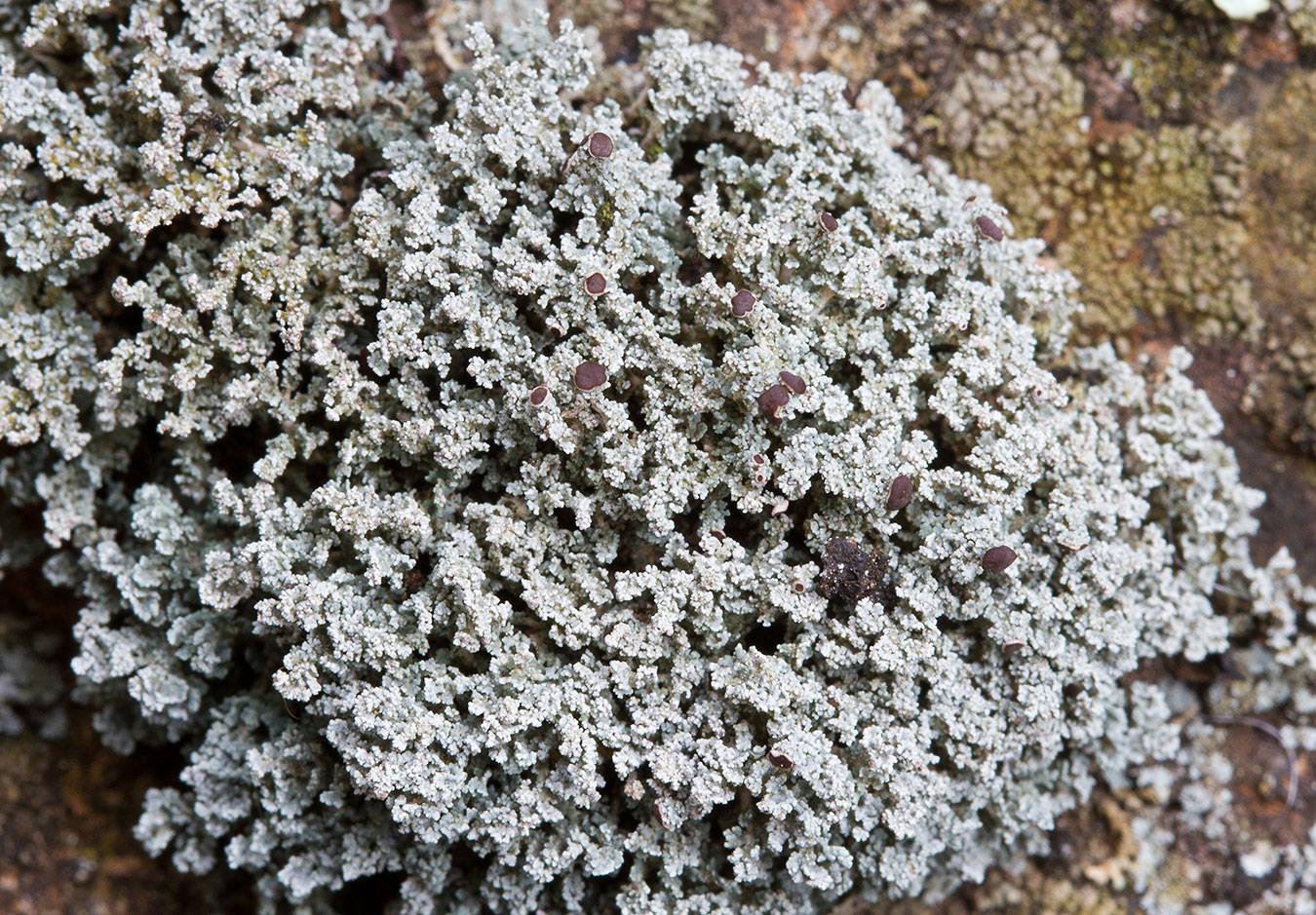
Consortium of Lichen Herbaria
- building a Global Consortium of Bryophytes and Lichens as keystones of cryptobiotic communities -
- Home
- Search
- Images
- Species Checklists
- US States: O-Z >
- US National Parks
- Central America
- South America
- US National Parks
- Southern Subpolar Region
|
Family: Stereocaulaceae |
Nash, T.H., Ryan, B.D., Gries, C., Bungartz, F., (eds.) 2002. Lichen Flora of the Greater Sonoran Desert Region. Vol 1. Life Habit: lichenized Thallus: fruticose, occasionally reduced and more crust-like, attached by the whole lower surface or by basal holdfasts surface: grayish, ochraceous-yellowish, olivaceous, brownish, rose or white, contiguous or granular-farinose to spongiose-filamentous, with or without tomentum photobiont: primary one a chlorococcoid alga, secondary photobiont a cyanobacterium (Nostoc or Stigonema or occasionally Scytonema or Chroococcus) usually present in cephalodia on the pseudopodetia; cephalodia: mostly irregularly globose lower surface: tomentose to glabrous primary thallus: usually rudimentary and disappearing early but in some species persistent, composed of basal granular or squamule-like structures (phyllocladia) Pseudopodetia: solid, ± terete, weakly to strongly branched, fruticose in appearance, usually corticate; central axis: cartilaginous, composed of thick-walled, longitudinal hyphae secondary thallus: shrubby, erect to decumbent, composed of stalks (pseudopodetia), developing from a ± well-developed holdfast in some species, phyllocladia: or phyllocladioid branchlets: verrucose to granular, cylindrical, squamulose or foliose, containing the algae and a loosely interwoven medulla, sometimes appearing dorsiventral; with or without soredia Ascomata: apothecial, terminal or lateral, roundish, sessile or substipitate or stipitate; disc: plane to often convex, pale brown to red-brown, dark brown or black, without a thalline margin; exciple: prominent (raised) to ± soon disappearing, sometimes pale and appearing almost thalloid; hymenium: hyaline below, brown, or ochraceous-yellowish above; paraphyses: unbranched, not (or scarcely) anastomosing, apices mainly with a brown cap; hypothecium: hyaline or ochraceous-yellowish (to brown in some species) asci: clavate to cylindrical, unitunicate, tholus I+ blue; in K/I with a blue outer layer, and a blue apical dome with a ± central, darker blue tube, c. 8-spored ascospores: ellipsoid, hyaline, clavate, or fusiform to cylindrical, acicular, or vermiform, transversely 1-13 septate, (12-) 16-100 (-200) x 2-7 µm, hyaline, smooth, thin walled, without distinctly developed endospore thickening, I- Conidiomata: sometimes present, terminal or lateral, immersed in the tips of phyllocladia, ovoid to spherical, darkened around ostiole conidia: formed acrogenously, filiform to cylindrical, straight or curved, simple Secondary metabolites: orcinol and beta-orcinol depsides, orcinol and beta-orcinol depsidones and aliphatic acids Geography: arctic-alpine, boreal and montane regions of Northern and Southern Hemispheres Substrate: on soil, bryophytes, detritus, or non-calciferous, siliceous rock; in cool to cold, humid areas. Notes: The genus is not likely to be confused with any other, except perhaps Leprocaulon, which has very fine, ecorticate branches and lacks ascomata. |
Powered by Symbiota









